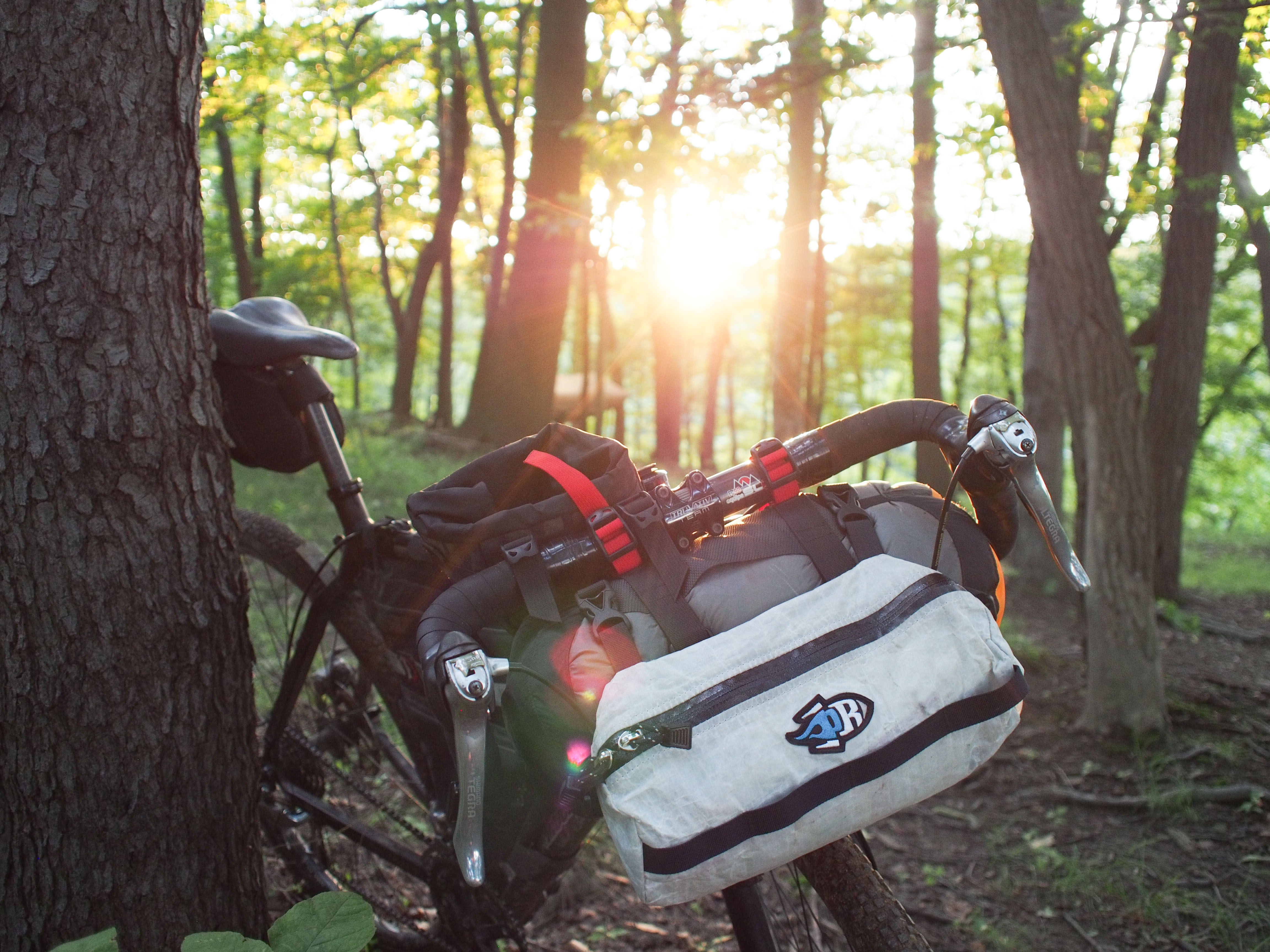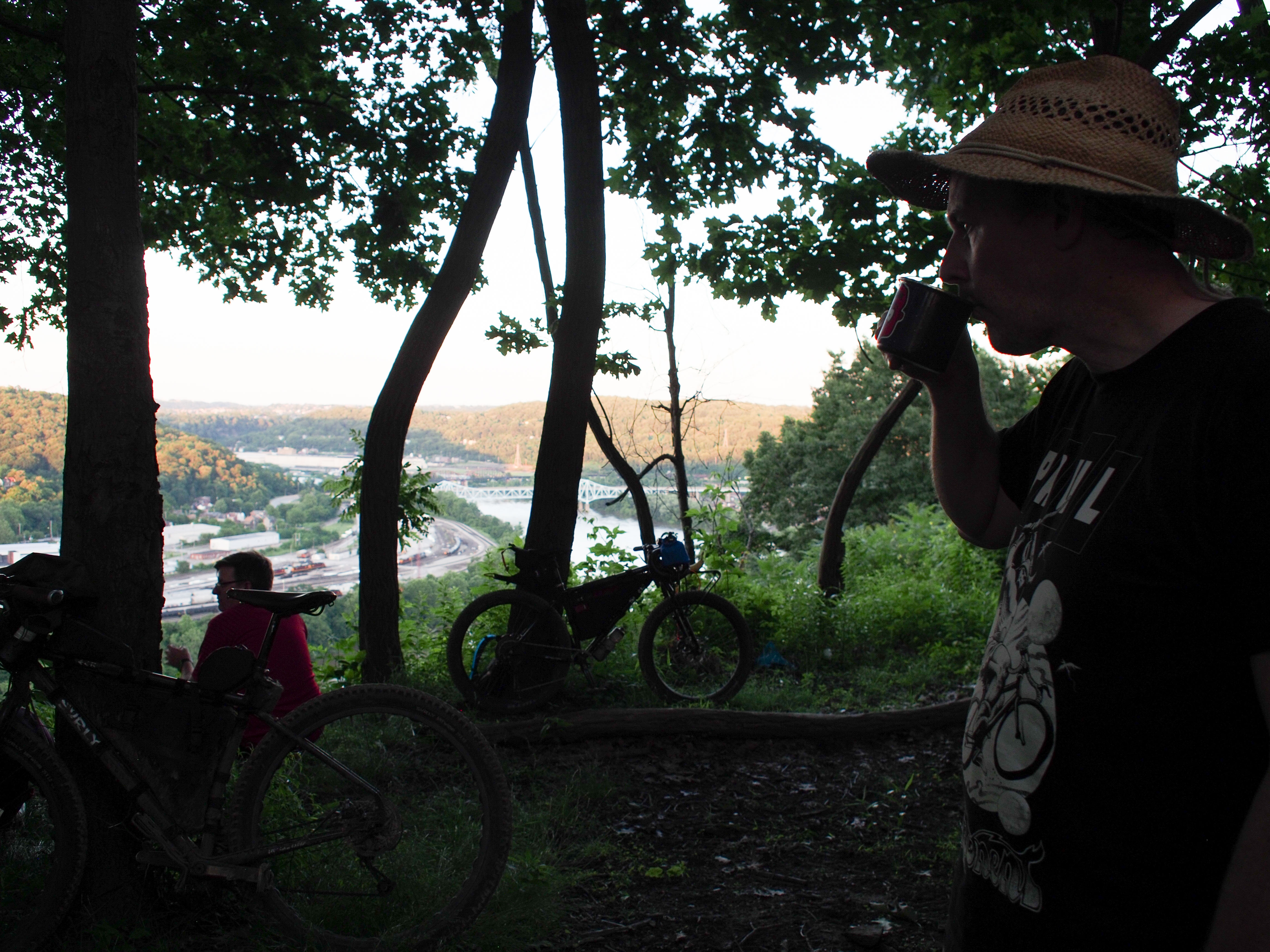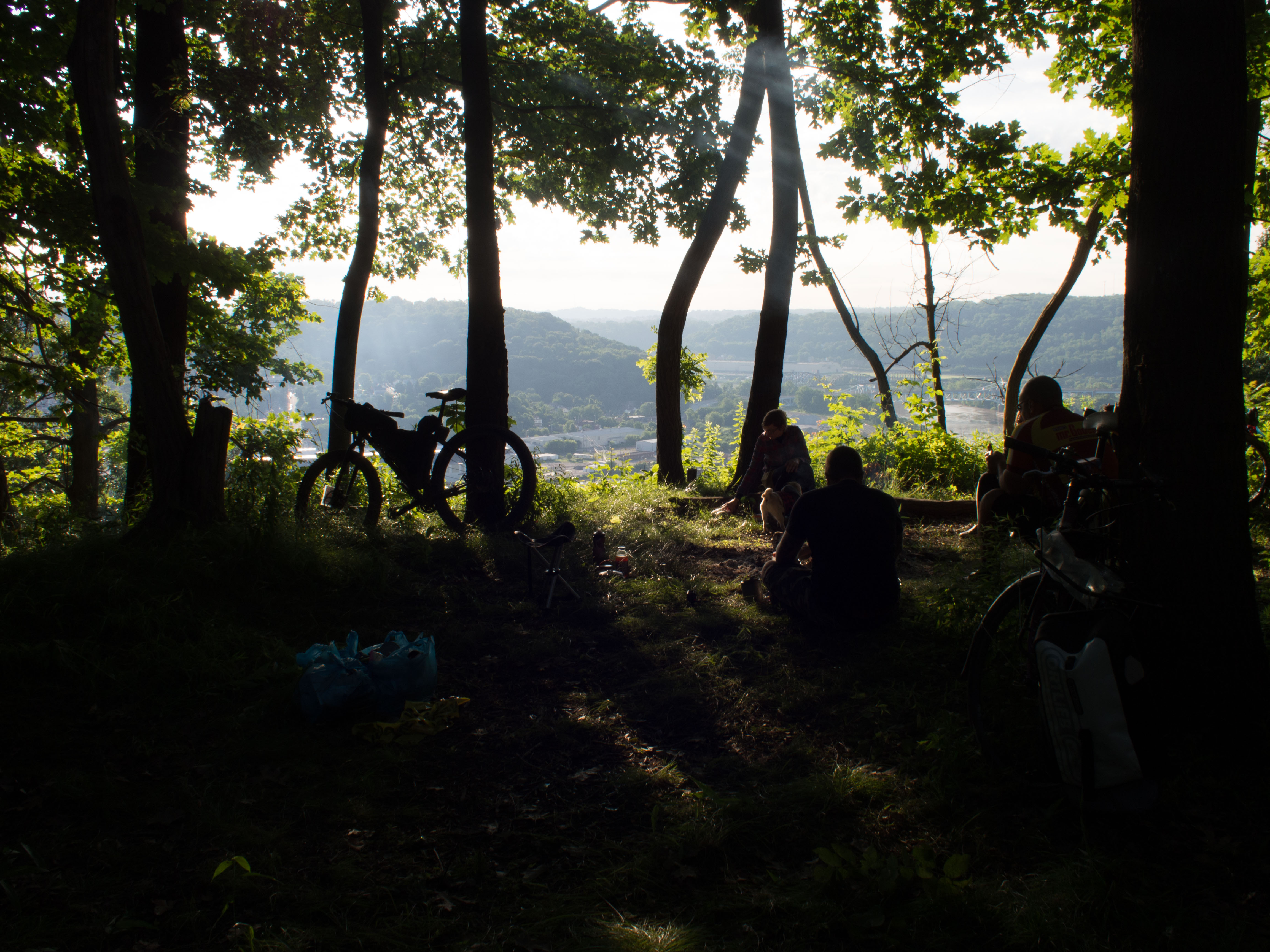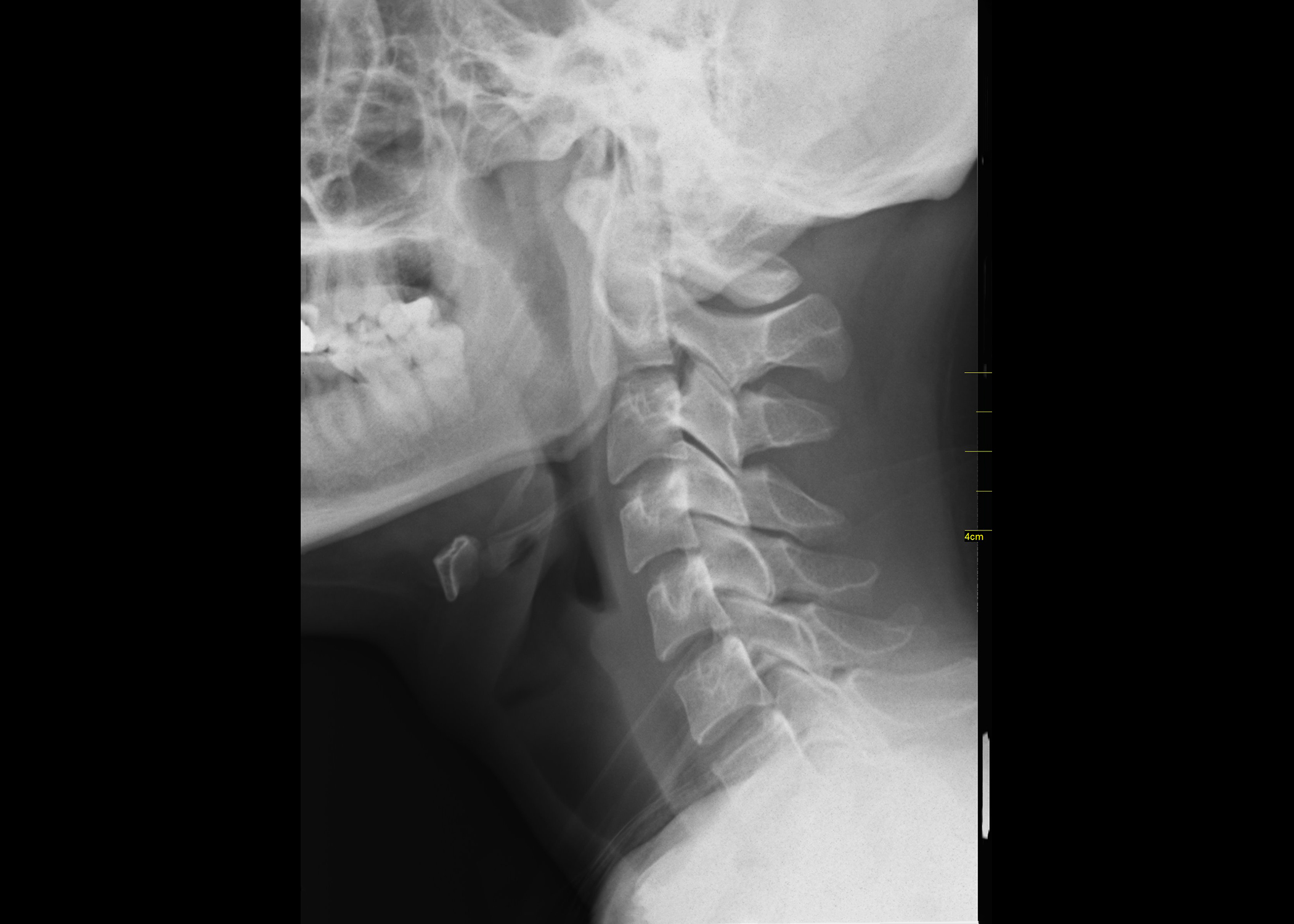Getting injured sucks. Here are some ways to make it suck less.
I’m sitting at my desk with an ice pack on the back of my neck, again. Fortunately it’s summer and warm, but the first time I had to do this, it was January and well below freezing outside. That was two and a half years ago. That’s when I first injured my neck, and it’s been bothering me, in one way or another, ever since.
I had some big plans for these warm months, lots of bikepacking and touring and such. So far, all I’ve done is one overnight trip, less than 20 miles total, and that’s likely to be all the travel by bike I’ll do this year. (I did do a mountain bike stage race in late spring…and there was an incident in a foam pit that probably exacerbated my injury…but those things don’t count for our purposes.) This is a bummer. But I’m trying hard not to let it bring me down too much, and for the most part, it’s not. I’m on track to be able to enjoy whatever kind of bike adventures I want within six months.
Let me share some of the things I’ve learned about dealing with injuries so that you can avoid some of my mistakes and have an easier time with your own recovery.
First off—realize that needing to recover from injury is a universal constant in cycling, as in any sport. If you haven’t had to deal with it yet, you will. Most of us have a history of injuries, minor and serious, with varying levels of recovery success. An injury can seem like a terrible setback—yanking you out of your saddle, metaphorically as well as perhaps literally, and landing you in the muck of decreased enjoyment in life. But the first step to a successful recovery is to recognize that injury happens to everyone. The universe has not singled you out for punishment. This is not a detour on your journey, but rather, a necessary bend in the road.

Doctor’s orders
Next—listen to your doctor, at least some of the time. The process of getting medical care can be trickier than it should be (especially here in the US), but medical professionals should be your first line of attack, if at all possible, to rule out anything more serious than you might suspect. But that harried doctor that only has two minutes to check your X-rays and dispense advice should not be the last person you talk to. Most of that doctor’s other patients are probably not at all athletic, in fact are often in poor shape, and advice and treatment is scaled accordingly. Move on, if you can, to getting supplemental treatment from practitioners who are used to dealing with athletes. You might be thinking, “But I’m not a pro athlete, I’m just a weekend warrior who likes to mess with bikes occasionally.” However, your bit of messing with bikes is probably a lot more physical activity than what the general populace does. Likewise, if your first doctor visit results in hearing “You’re fine” when you know you’re not, keep looking for better treatment. It can be exhausting, but your future riding enjoyment depends on it.
Physiotherapy (a.k.a. physical therapy in the US) is a wonderful thing, and should be prescribed for any serious injury. It’s amazing what can be accomplished with some manual therapy and a set of customized exercises to get everything moving properly again. Some of my neck exercises are downright weird—who knew that squeezing one’s shoulder blades together while lifting one’s arms could cause one’s clavicles to feel like they’re on fire?—but they are working. Oftentimes this is the best avenue for more athletically inclined advice, as well. For example, my physio guy watched me ride my bike around the parking lot and was able to make some on-the-spot fit recommendations. (Looks like a dorky hi-rise stem is in my future.)

Also consider pain management. Acupuncture, trigger-point therapy (a.k.a. myofascial release), and sports massage can all be very helpful in relieving pain and reducing inflammation. I’ve tried the first two with good results, and will continue to use them when I can. These kinds of ‘alternative’ treatments may not be covered by a healthcare plan, national or private, but often they are more reliably effective, and have fewer side effects, than pain medication.
Slow ride, take it easy
One of two attitudes seem to emerge after an injury, and sometimes they alternate, day-by-day or minute-by-minute: 1. woe is me, I can’t do anything, and 2. I must do everything I can as soon as possible. But the best path is to split the difference—take it easy with gentle, appropriate exercise, but don’t let your injury become an excuse to fall into a slump of inactivity.
It can be tough to let go of a big goal you’ve been working toward, but there’s no need to let go completely—it’s time to simply adjust your goals to the new reality. Rather than prepping for hundred-mile days in the saddle, you might be aiming to get back in the saddle at all, but that doesn’t make the goal any less worthy. Set goals that come with rewards: a social ride to the new brewery, a therapeutic spin to the ice cream stand.

Your physio exercises will become your training, at least for a while, which is fine. Also consider ‘training’ to be any kind of activity that gets your heart pumping out in the fresh air, especially in the early stages of recovery—a nice walk with the family, even simply meditating in the sunshine. Missing endorphins can make you grumpy if not legitimately depressed, so it’s important to do anything you can to reconnect with the world outside. Later on, you can add some appropriate cross-training activities, such as swimming or yoga, or easy spins on the stationary trainer. Keep in mind that even gentle exercise gets the blood flowing and stimulates nerves, which in turn help healing.
Our relationship to pain may have to change, post-injury. Many of us who enjoy hard efforts have embraced the ‘pain cave.’ But that special kind of burning ache that comes with a hard day on the bike may be unattainable for now; instead you may be confronted with the injured parts complaining loudly while simply getting out of bed in the morning. Above all, listen to your body and learn to distinguish the ‘good’ kinds of pain from the ‘bad.’
Brain games
Oftentimes the most injured part, especially after a traumatic crash, is confidence. Our brains replay the scene over and over, trying to make it come out differently, but only embedding the fear deeper. It’s natural to have an impulse to avoid the painful situation altogether…which is likely impossible, unless you stop riding a bike altogether. Unacceptable!
So we need to take control of the memory and use it to our advantage. With some strategic intervention, you actually can change that scene in your head. Skills training can help you figure out how to handle the situation differently, and practicing new skills, even if only in your mind at first, has real, positive effects for performing them in real life. Being able to envision a new, successful outcome of a scary situation is the first step to making it happen.

If your skills are not in question—perhaps it was a freak accident that brought you down—you can at least set up a series of positive steps toward a better outcome. Those small early recovery rides are crucial, since each time you ride and nothing bad happens, that becomes another file in your brain’s folder to draw from in the all-important archives of experience. That one bad incident gets more and more buried. My original injury happened when my helmet light got caught on a branch on a night ride, so for a good while, my ‘strategy’ was to avoid night riding in the woods. But thinking about not ever again enjoying moonlight on a snowy trail…coming upon owls hunting in the trees…maybe a nip of whiskey over a barrel fire…makes me sad. So I’ve gone out on a few short night rides, being careful of low branches, but generally having a good time and letting those times cancel out the single bad one.
Patience is an especially helpful virtue in recovery. Sometimes it can seem like the road to healthy normalcy is so long, it has no end. And sometimes you have to accept that there will be a new normal to adjust to. (Here I’m thinking of an acquaintance who crashed into a ditch and became paralysed from the chest down…he began planning to continue his rides on a hand-cycle while still in the hospital.) Fortunately, it takes less time to re-gain fitness and skill than it took to acquire in the first place. The same drive that helped us get to be awesome bike riders will help us regain that awesomeness.
So, to sum up: the lessons we’ve learned from difficult rides apply to recovering from injury. Mainly—keep an end goal in sight but take it one pedal stroke at a time.
Top X-ray image by © Nevit Dilmen, CC BY-SA 3.0
Comments (4)
Leave Reply
Post Comment

You have my sympathy! When I read that pro’s are coming back from collarbone breaks in a matter of weeks I wonder how!? It took me months to get back to riding outside (although caution around the head injury may have had something to do with that ). Sometimes you just have to keep on keeping on, remembering the phrase “hurt is not harm”. Almost two years on from being knocked off by a truck, I still suffer shoulder pain, but I train, I race. It just hurts a bit more and extends the recovery period.
You have my sympathy! When I read that pro’s are coming back from collarbone breaks in a matter of weeks I wonder how!? It took me months to get back to riding outside (although caution around the head injury may have had something to do with that ). Sometimes you just have to keep on keeping on, remembering the phrase “hurt is not harm”. Almost two years on from being knocked off by a truck, I still suffer shoulder pain, but I train, I race. It just hurts a bit more and extends the recovery period.
Way to go! You have even more sympathy from me — getting knocked off by a truck is one of those unpredictable outcomes that can cause lurking fear in every rider. But glad you’ve gotten back on the saddle.
Way to go! You have even more sympathy from me — getting knocked off by a truck is one of those unpredictable outcomes that can cause lurking fear in every rider. But glad you’ve gotten back on the saddle.